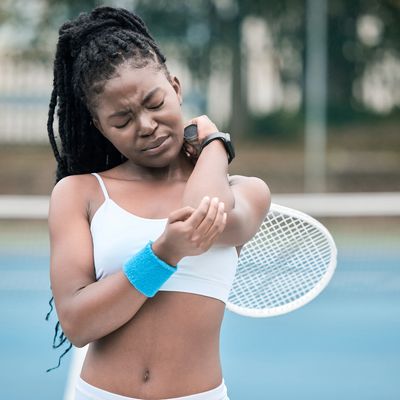Acupuncture Treatments for Pain Relief: Tennis Elbow
Get back on the court with Eugene's sports acupuncture experts
Background
Tennis elbow—medical name lateral epicondylitis—is pain on the outside of the elbow caused by microtears and degenerative change (tendinosis) in the wrist extensor tendon group where they attach at the lateral epicondyle. The extensor carpi radialis brevis (ECRB) is most commonly involved; it stabilizes the wrist during gripping and load‑bearing tasks. The condition typically affects the dominant arm and is especially common in adults ages 30–50.
Despite its name, you do not need to play tennis to get tennis elbow—only about 5% of cases are linked to the sport. Repetitive gripping, twisting, and wrist extension in everyday or occupational tasks (carpentry, painting, plumbing, meat cutting, musicianship, mouse/keyboard work, gardening, knitting, and other repetitive handwashing tasks—hence the nickname “washerwoman’s elbow” in Japan) are far more common contributors.
The clinical picture
Tennis elbow and golfer’s elbow are sister conditions that differ mainly by location: lateral (wrist extensors) vs medial (wrist flexors). Knowing which side hurts helps guide targeted care.
Good news: most mild cases improve naturally. Up to 80–90% recover within 6–24 months with time and basic self‑care—activity modification, icing, gentle stretching, NSAIDs when appropriate, physical therapy, and bracing. When symptoms persist or interfere with work or sport, adjunctive therapies can help. Evidence‑informed options include acupuncture (pain reduction, functional gains—especially in chronic cases) and dry needling, which is increasingly used for lateral elbow tendinopathy and aims to stimulate blood flow and tissue repair in the affected region. Other modalities sometimes used include corticosteroid injection (short‑term relief, higher recurrence), extracorporeal shockwave therapy, massage, and—rarely—surgery after prolonged failed conservative care.
From a rehab perspective, structured intervention outperforms passive waiting for many patients. Programs that combine manual therapy or mobilization with progressive exercise (notably eccentric loading) shorten recovery time and reduce recurrence risk compared with “wait and see” strategies alone.
Bottom line
Tennis elbow is common, often self‑limited, but stubborn cases benefit from a multimodal plan that pairs load management and strengthening with needling‑based pain modulation and tissue support. Individualizing care around symptom severity, functional demands, and performance goals yields the best outcomes.
Ready to get back to lifting, swinging, climbing, or typing without elbow pain?
Orthopedic sports acupuncture and dry needling at Anjuna Sports Acupuncture can be integrated into your rehab plan to speed recovery and support a durable return to activity. Contact us to schedule an evaluation.

Tennis Elbow (Lateral Epicondylitis)
Treat Tennis and Golfer's Elbow: Acupuncture | Dry Needling
Download PDF